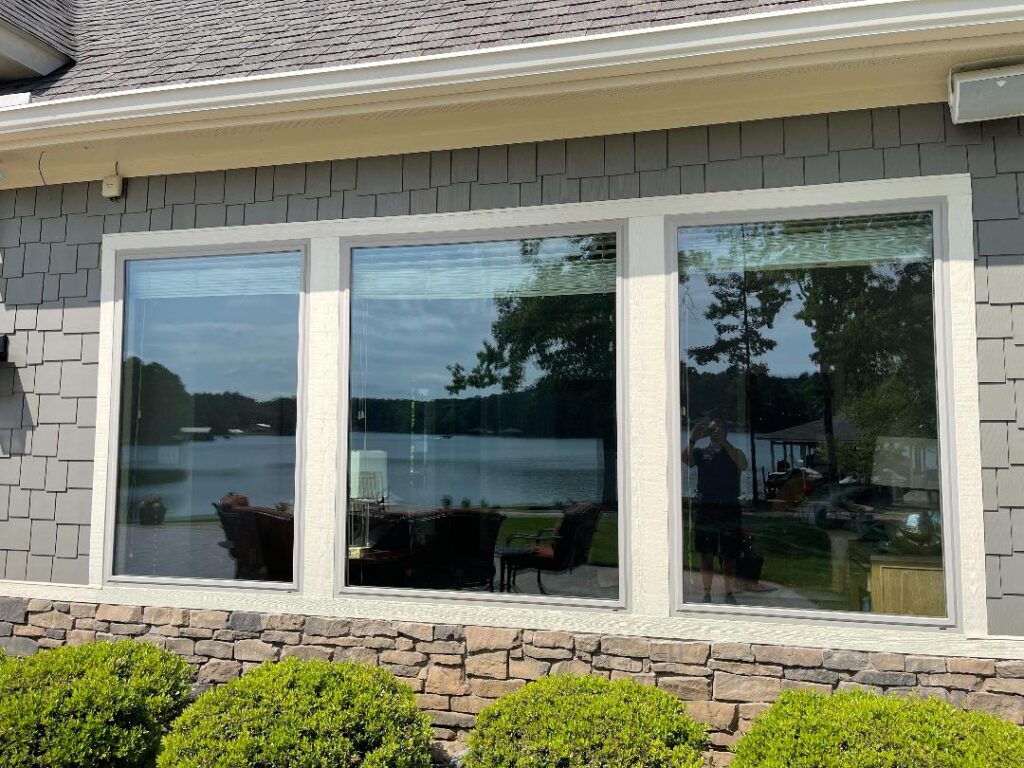Exactly How Residential Home Window Tinting Enhances Your Home's Energy Performance
Residential window tinting presents an engaging solution for homeowners looking for to enhance power efficiency within their living rooms. By applying specialized movies to home windows, it properly decreases warmth transfer, thereby maintaining indoor temperature levels and lessening the need for extreme home heating or cooling. This not only stops energy usage yet likewise gives a more comfy setting by reducing glare. Understanding the nuances of exactly how tinting jobs and selecting the suitable kind for your home can be crucial. Strangely enough, what elements should one consider before making this financial investment?
Comprehending Window Tinting
Comprehending home window tinting is important for home owners looking for to improve both convenience and energy effectiveness in their living areas. Residential Window Tint. Home window tinting includes the application of a slim movie to the interior or outside surface area of glass home windows. This movie can significantly modulate the amount of sunshine and warm that enters a home, thus affecting interior environment conditions
There are different types of home window tinting films readily available, each with unique homes. The effectiveness of home window tinting is usually gauged by its Visible Light Transmission (VLT) percent, which indicates just how much light can pass with the movie.
Benefits of Energy Effectiveness
Home window tinting not only enhances looks but additionally plays a considerable function in improving power performance within household areas. By reducing warm transfer with windows, colored films produce an extra stable indoor environment, which can result in substantial reductions in power intake for heating & cooling. This power efficiency translates into reduced utility expenses, providing home owners with substantial long-lasting savings.

Additionally, home window tinting boosts the comfort of living spaces. By decreasing glow and obstructing hazardous UV rays, colored home windows produce an even more pleasurable atmosphere, which can result in boosted wellness for residents. The defense against UV rays additionally assists preserve furnishings and flooring from fading, adding to the durability of home items.
How Tinting Functions
Tinting films run via a mix of sophisticated products and innovations designed to manage the quantity of solar power getting in a home. Mainly made up of polyester, these films often incorporate ceramic or metallic fragments that reflect and soak up warmth. This dual ability permits them to substantially reduce the infiltration of ultraviolet (UV) rays and infrared radiation while allowing visible light to go through.
The performance of window tinting is determined by its solar warmth gain coefficient (SHGC), which suggests just how much solar power is transferred with the home window. Reduced SHGC values are better as they denote higher warm denial. Additionally, window colors can include a variety of shades, enabling property owners to tailor their visual preferences while enhancing energy effectiveness.
In addition, these films serve as an obstacle, protecting against warmth loss during chillier months by showing interior warmth back into the living area. This thermal insulation impact enhances the air conditioning you can check here advantages gained during warmer months, contributing to a well balanced indoor climate year-round. By handling solar power successfully, household home window tinting not just boosts convenience yet additionally plays an essential function in lowering power intake and decreasing energy expenses.
Choosing the Right Tint

There are numerous kinds of window films readily available, including dyed, metalized, and ceramic. Ceramic films supply superb warmth control without endangering visibility and are highly resilient, making them a prominent selection.
Noticeable light transmission (VLT) is another critical factor, as it indicates the amount of natural light that can travel through the tinted glass. House owners need to pick a color with a VLT that enhances additional info their lights preferences while still offering appropriate glare reduction.
Furthermore, evaluating the solar warm gain coefficient (SHGC) can assist figure out exactly how well a color can block heat from sunlight. A lower SHGC indicates better warmth control, inevitably boosting power effectiveness.
Installment and Upkeep Tips
Correct setup and upkeep are important parts in making best use of the benefits of residential home window tinting. Specialists likewise make use of specialized tools and techniques, which can enhance the sturdiness and effectiveness of the tint.
Complying with installment, upkeep is vital to extend the life of the home window movie. It is advised to wait at the very least 30 days before cleaning the colored windows to permit the adhesive to treat fully.
Addressing these problems quickly can prevent further damages and keep energy efficiency. By adhering to these installment and upkeep suggestions, property owners can guarantee their home window tinting continues to provide significant power cost savings and comfort for years to come.
Final Thought
In final thought, residential window tinting offers as an effective remedy for boosting power effectiveness within homes. By lowering warm transfer and obstructing damaging UV rays, window movies contribute to reduce power consumption and enhanced interior convenience.
Window tinting entails the application of a thin film to the interior or outside surface area of glass home windows. By lowering warmth transfer via windows, tinted movies develop a more steady interior environment, which can lead to significant reductions in energy usage for home heating and air conditioning.The effectiveness of window tinting is determined by its solar warm gain coefficient (SHGC), which shows just how much solar power is transmitted through the window. By handling solar power effectively, household additional reading window tinting not only enhances comfort but likewise plays an essential role in lowering power consumption and reducing energy expenses.
By reducing warm transfer and obstructing dangerous UV rays, window movies add to reduce power consumption and enhanced interior convenience.